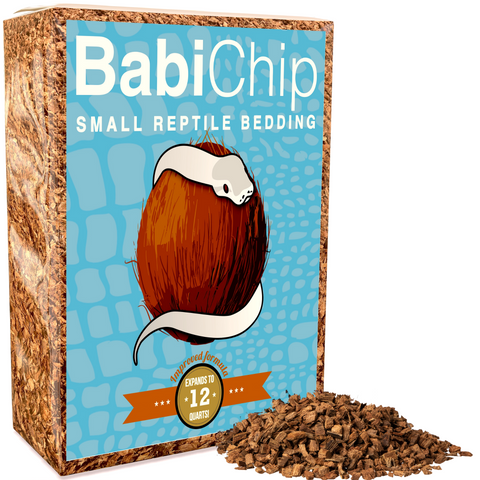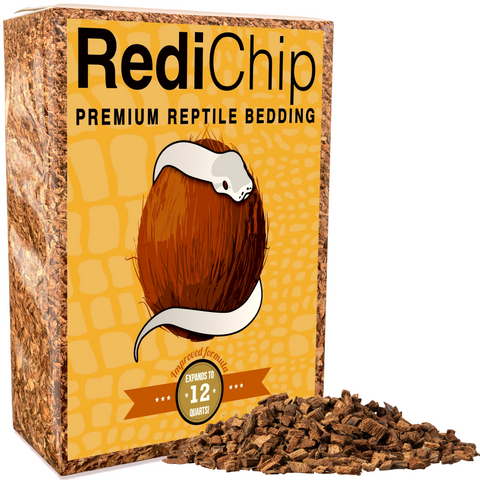Jackson's Chameleon
Trioceros jacksonii
Natural History
The Jackson's chameleon is a distinctive and highly specialized arboreal lizard native to the highland forests of East Africa, particularly in Kenya and northern Tanzania. This species has also established populations in Hawaii due to human introduction. It inhabits montane forests and woodland edges, thriving in cool, moist environments typically found at elevations ranging from 5,000 to 8,000 feet. The chameleon's unique biology and behavior reflect its adaptation to such habitats, and understanding its life in the wild is essential for keeping it healthy in captivity.
From hatchling to adult, the Jackson's chameleon's life cycle unfolds in a fascinating way that sets it apart from most other reptiles. Unlike many lizards that lay eggs, Jackson's chameleons are ovoviviparous, meaning they give birth to live young. Females typically produce 8 to 30 offspring in a single reproductive cycle. Mating generally occurs during the cooler, wetter seasons, with gestation lasting around 5 to 7 months. At birth, the young are fully independent and measure approximately 2 to 3 inches in length. They undergo rapid growth during the first year, during which they are particularly sensitive to environmental conditions and require high humidity and proper nutrition to thrive. Males reach sexual maturity around 9 to 12 months of age, while females may mature slightly earlier under optimal conditions. In the wild, Jackson's chameleons can live up to 5 years, though individuals in captivity, with proper care, may live longer—up to 8 or even 10 years in some cases.
Behaviorally, Jackson's chameleons are solitary, deliberate creatures that rely on cryptic coloration and stillness to avoid detection. They are primarily diurnal, becoming active during daylight hours when they can regulate their body temperature via basking and more effectively hunt for prey. They use a slow, rocking gait—mimicking the swaying of branches—to navigate the foliage stealthily. Males possess three prominent cranial horns, which they use in ritualized combat with other males over territories and access to females. These displays can include head-bobbing, posturing, and physical clashes in which they attempt to push each other from a perch. Despite this aggression toward conspecifics, particularly among mature males, they are generally non-aggressive toward other species unless threatened.
Their hunting technique is among the most unique in the reptile world. Jackson's chameleons are sit-and-wait ambush predators, relying on exceptional eyesight and independently mobile eyes to locate insect prey. Once a target is acquired, they project their long, sticky tongue—often more than twice their body length—with remarkable speed and precision to capture it. Typical prey includes crickets, flies, moths, beetles, caterpillars, and other small invertebrates. Their slow movements and camouflage also serve as a primary defensive mechanism, though they may gape, hiss, or use their horns to intimidate predators if directly confronted. Natural predators include birds of prey, snakes, and carnivorous mammals, particularly during the vulnerable juvenile stages.
In the ecosystem, Jackson's chameleons serve as both predator and prey, playing a critical role in controlling insect populations in their native habitat. By feeding on a wide variety of arthropods, they help maintain ecological balance and reduce the spread of pest species that might otherwise damage plant life or spread disease. Conversely, they provide a food source for higher trophic level animals. Their presence also contributes to the biodiversity and health of montane forest ecosystems, where they function as a specialized component of the arboreal insectivore community. Adaptations such as prehensile tails and zygodactylous feet facilitate effective climbing and anchoring on branches, while their color-changing abilities help regulate their body temperature and communicate with other chameleons.
Understanding the complexity of Jackson's chameleons in their wild environment sheds light on the highly specific needs they have in captivity. Their solitary nature, sensitivity to temperature and humidity, and requirement for vertical, foliage-rich space are all extensions of their ecological adaptations. Reptile keepers should appreciate the intricacies of the species’ life history and behavior in the wild to create a healthy, enriching captive environment that replicates their natural conditions as closely as possible.
Conservation Status
The Jackson's chameleon is currently classified as Least Concern on the IUCN Red List. This status indicates that, on a global scale, the species is not currently facing a significant risk of extinction. Populations in their native range—mountainous regions of Kenya and northern Tanzania—are relatively stable, and the species maintains a broad distribution throughout suitable habitats within this range. The Least Concern classification also suggests that, while local threats may exist, they have not yet resulted in widespread declines in population numbers or geographic contraction severe enough to elevate the species to a more threatened status. However, maintaining this stability depends on ongoing monitoring and management of localized pressures.
Despite its current conservation status, the Jackson's chameleon faces several threats that could affect wild populations if not addressed. One of the primary concerns is habitat degradation due to agricultural expansion, deforestation, and urban development. As human populations expand into montane and mid-elevation forests, the natural habitats preferred by this species are increasingly fragmented. This fragmentation can isolate populations, reduce genetic diversity, and restrict access to adequate food sources and breeding sites. Climate change poses an additional long-term threat, as temperature and precipitation changes in montane regions could alter the microclimates essential to the species’ survival.
Another notable threat is the collection of Jackson's chameleons for the international pet trade. While the species has established stable, non-native populations in places like Hawaii (where it is considered invasive), individuals are still occasionally captured from the wild for sale in the pet industry, particularly from East African populations. Unregulated or excessive collection can lead to population declines, especially when combined with other stressors such as disease or habitat disturbance. While not a major issue at current levels, this practice must be monitored to prevent undue pressure on native populations. Invasive species, including predators such as feral cats and birds, may also pose regional threats, especially where chameleons live close to human-settled areas.
Conservation efforts for the Jackson's chameleon are primarily focused on habitat preservation and legal regulation of trade. In their native range, parts of their habitat fall within wildlife reserves and protected forest zones, which offer some assurance against large-scale deforestation and land conversion. National and regional environmental policies in Kenya and Tanzania have also helped safeguard montane forest corridors, preserving essential ecosystems not only for chameleons but for a wide range of endemic fauna. Additionally, international regulation of trade under the Convention on International Trade in Endangered Species of Wild Fauna and Flora (CITES) helps control exportation and ensures that individuals entering the pet market are not sourced in ways that threaten wild populations.
There are currently no large-scale captive breeding programs specifically geared toward reintroduction of Jackson's chameleons into the wild, largely due to their stable wild population. However, captive breeding has been successful in zoological institutions and by private breeders, which helps meet demand in the pet trade without increasing pressure on wild populations. Maintaining genetically diverse captive groups also provides a potential safety net should conservation needs change in the future.
For herpetoculturists, understanding the species’ conservation context is essential not just from an ethical standpoint, but to support responsible keeping practices that avoid contributing to habitat destruction or illegal trade. The ongoing stability of Jackson's chameleon populations will largely depend on how effectively local governments and the global community continue to manage habitats, regulate trade, and promote awareness for sustainable wildlife interactions.
Native Range
Jackson's chameleons are native to the highland regions of East Africa, with their natural range concentrated primarily in Kenya and northern Tanzania. Within this distribution, they are most commonly found in the highland forests surrounding Mount Kenya, the Aberdare Range, and the eastern slopes of Mount Kilimanjaro. Their range is considered relatively restricted when compared to other chameleon species, as they are specialized for specific environmental conditions. Although they have been introduced to other parts of the world, such as Hawaii, this care sheet focuses solely on their native habitat and conditions.
The primary macrohabitat of Jackson’s chameleons consists of montane and submontane forests within their East African range. These environments are categorized as tropical cloud forests and moist montane woodlands, characterized by dense vegetation, high humidity, and frequent cloud cover. Within these broader ecosystems, Jackson’s chameleons favor microhabitats that offer suitable cover and access to arboreal structures. They are strongly arboreal and are most frequently observed in the mid to upper canopy of shrubs and small trees, especially areas where overlapping branches provide stable pathways for movement. They also regularly utilize dense thickets, bamboo tangles, and isolated clumps of lichen- and moss-covered branches—habitats that provide both concealment from predators and opportunities for ambush-hunting insect prey.
The climate of their native range is characterized by moderate temperatures and consistently high humidity, influenced heavily by elevation and prevailing weather patterns. Average daily temperatures in their montane habitats generally range from 60°F to 75°F, rarely exceeding 80°F even during the warmest months. Nighttime temperatures often drop to between 50°F and 60°F, a temperature gradient that plays an important role in their physiological regulation. Relative humidity typically remains high year-round, generally between 70% and 100%, due to persistent cloud cover, dew, and seasonal rainfalls. Rainfall is usually bimodal, with two primary rainy seasons—one from March to May and another from October to December—providing essential moisture and sustaining the lush vegetation. Drier periods are cooler and overcast rather than arid, which prevents desiccation and supports continuous ecosystem productivity.
In terms of elevation, Jackson's chameleons are predominantly found in mid- to high-elevation zones. Their native altitude range spans from about 4,900 feet to 8,500 feet above sea level, with typical populations concentrated in areas between 5,900 and 7,800 feet. These elevations provide the cool and moist microclimates that are necessary for the species’ thermoregulation, hydration, and reproductive success. The availability of native flora, such as tree ferns, highland shrubs, and certain epiphytes, contributes to the structural complexity of their habitat, offering essential resources like basking sites and shelter.
Several critical environmental factors influence the survival of Jackson’s chameleons in the wild. Access to consistent moisture is vital, not only from rainfall but also from the frequent condensation that forms on leaves in these misty environments. The presence of a continuous canopy or well-developed understory vegetation is essential for locomotion and protection. The terrain typically includes rich volcanic soils with abundant plant diversity but with intermittent rocky outcrops and occasional clearings where morning sunlight can penetrate the forest canopy. These sunlit patches are essential for brief periods of basking, a behavior crucial for thermoregulation. Despite their chilly environments, they rely on early morning warmth to raise body temperatures enough to become active and forage.
Taken together, these ecological parameters—cool temperatures, high humidity, montane elevations, and dense arboreal plant structure—define the natural habitat of Jackson’s chameleons and should be carefully replicated in captive conditions to support their health and well-being.
Behavior
Jackson's Chameleons are primarily diurnal reptiles, with the majority of their activity occurring during daylight hours. In their native mountain habitats, where cloud cover and cooler temperatures influence light availability, they are most active in the early morning and late afternoon, when basking opportunities and optimal temperatures coincide. Seasonal changes significantly affect their behavior, especially in cool or dry seasons when activity levels may decrease due to lower ambient temperatures or food scarcity. In some captive conditions, slight brumation-like behavior has been observed during winter months, characterized by reduced activity and appetite, although true brumation is not typical for this tropical species. During the breeding season, which is influenced by increasing daylight and temperature, males become more visually active and move more frequently in search of females.
Socially, Jackson’s Chameleons are solitary and highly territorial, particularly males. Male-to-male interactions often result in displays of aggressive posturing, including lateral body inflation, brightening of color, and extension of the casque and horns to appear larger. Physical confrontations may occur, but in both wild and captive settings, visual deterrence typically resolves disputes before combat. This territoriality extends to both feeding areas and basking sites. Females are less aggressive but will also defend space if pressured excessively. There is no evidence of social hierarchies, as interactions are usually limited to brief mating encounters or territorial disputes. Mating behavior includes a courtship phase in which males approach females with deliberate head bobs, color changes, and gentle horn touches. If receptive, the female will remain passive; if unreceptive, she may turn dark and gape or lunge in rejection. Parental care is absent. Jackson's Chameleons are ovoviviparous, and after a gestation period of about five to seven months, females give birth to live young, which are immediately independent.
Environmental stimuli play a central role in driving behavior. Jackson’s Chameleons regulate their body temperature through behavioral thermoregulation, moving between sunlit perches and shaded areas. They are highly sensitive to temperature changes; in excessively hot conditions, they may gape or move to lower branches, while in cooler weather, they seek basking sites first thing in the morning. Light cycles directly influence their circadian rhythms, and photoresponsive behavior is critical for maintaining daily activity and seasonal breeding cues. Humidity levels also affect behavior, especially hydration habits. In the wild, they hydrate by licking dew or raindrops from leaves, and this behavior must be replicated in captivity with fine-mist spraying or drippers.
These chameleons rely heavily on visual cues. Their independently rotating eyes allow nearly 360-degree vision to detect movement from potential prey, predators, and rivals. When prey is spotted, they use their ballistic tongue—often exceeding 1.5 times their body length—to capture insects with remarkable accuracy. Defensive behavior includes color shifting to darker or more vibrant tones to signal stress or aggression, and a gular puffing display accompanied by hissing and lunging, especially when threatened. Camouflage is also employed in resting or passive states, helping them blend with branches and leaves to avoid predators. Their prehensile tails and zygodactylous feet provide strong grasping ability, allowing stable navigation through complex vegetation, a distinct locomotion style suited to an arboreal life.
In captivity, behavioral differences can be pronounced due to the absence of environmental stressors and constraints. Feeding behavior often changes, as prey is more predictable and readily available. Some chameleons show reduced foraging behavior and may become overweight if feeding is not carefully controlled. Aggression, particularly in males, remains a concern in confined spaces; visual barriers or solitary housing are necessary to prevent chronic stress. Stress behaviors in captivity may include dull coloration, refusal to eat, or pacing at the enclosure's boundaries. Enrichment is critical to simulate natural movement and hunting behaviors; this can include varying perch placement, providing live insects, and maintaining complex, vertically oriented foliage. Captive individuals may also lose seasonal rhythms if lighting and temperature cycles are not optimized, leading to irregular breeding or lethargy.
Overall, Jackson’s Chameleons are behaviorally complex reptiles whose environmental responsiveness and solitary nature necessitate careful, species-specific husbandry to replicate their natural behaviors in a captive setting.
Captivity Requirements
Enclosure Design
Jackson's chameleons are arboreal reptiles native to montane cloud forests of East Africa, where they inhabit cool, humid, and densely vegetated environments. To replicate this in captivity, their enclosure must emphasize vertical space, excellent ventilation, and adequate environmental complexity. For juvenile individuals up to 6 months old, the minimum recommended enclosure size is 18 x 18 x 24 inches, but adults require considerably larger housing. Adult males, which typically reach up to 14 inches in length including the tail, should be housed in an enclosure of no less than 24 x 24 x 48 inches. Females can be kept in slightly smaller enclosures, but it is generally advisable to maintain the same minimum dimensions for all adults to allow for adequate movement and environmental enrichment.
The best material for Jackson's chameleon enclosures is screen or mesh, ideally high-quality powder-coated aluminum. This provides excellent airflow, which is crucial in preventing respiratory issues and mimicking the breezy montane climates they inhabit. However, in particularly dry climates or during winter months, partially enclosed enclosures with a combination of screened sections and solid sides (made from PVC panels or acrylic) can help retain humidity while still allowing adequate ventilation. It is essential to avoid glass enclosures, as these restrict airflow and may contribute to stagnant air and mold growth if humidity is not carefully managed.
The interior of the enclosure should be structured to reflect the chameleon’s natural arboreal habitat. Vertical and diagonal climbing structures are essential. Use a combination of natural branches (such as grapevine, cork bark, or hardwoods treated to be safe) and artificial vines secured securely to prevent collapse. Horizontal perches should be placed at multiple levels throughout the enclosure, particularly just below the basking light to allow thermoregulation. At least two hides made of dense foliage (live or artificial) should be provided — one within the lower third of the enclosure where it is cooler and more humid and one in the mid-range for rest and stress reduction. Plantings using safe live plants such as pothos, hibiscus, or schefflera offer both climbing opportunities and visual barriers, reducing stress and promoting natural behaviors.
Due to their agility and strong grip, Jackson's chameleons are competent climbers and can exert pressure against enclosure openings. Enclosures must have secure latching doors, and if using a custom-built setup, seams and gaps should be sealed to prevent escapes. All feeding doors and maintenance panels should close tightly and be locked when not in use.
Lighting and Heating
Proper lighting and heating are critical to the health of Jackson’s chameleons, affecting not only their thermoregulation but also calcium metabolism and behavioral rhythms. These reptiles require a distinct temperature gradient within the enclosure to allow for behavioral thermoregulation. The basking spot should be maintained between 85–88°F, with the ambient temperature in the enclosure ranging from 72–78°F during the day. Nighttime temperatures can drop to 60–65°F, reflecting the cool nights of their montane environment. It is important that the heat source, whether a basking bulb or ceramic heat emitter, be regulated by a reliable thermostat to ensure steady, safe temperature levels. Under no circumstance should heat rocks be used, as they pose a serious burn risk and do not effectively regulate ambient temperature.
UVB lighting is crucial for Jackson's chameleons to synthesize vitamin D3 and properly absorb dietary calcium. A linear T5 high output UVB lamp providing 5.0% to 7% UVB output should be mounted above the screen top of the enclosure, with the closest accessible branch or perch placed 6–12 inches beneath it. This ensures the lizard can receive the benefits without risk of overexposure. Compact coil UVB bulbs are not sufficient for chameleons and should be avoided. UVB fixtures must be replaced every 10–12 months, depending on manufacturer guidelines, even if the bulb continues to emit light, as UVB output diminishes over time.
Jackson's chameleons benefit from a consistent photoperiod of 12 hours of light and 12 hours of darkness, reflecting the equatorial conditions of their native habitat. Seasonal adjustments in light cycle do not need to be drastic, but minor changes (such as reducing light exposure by an hour during winter months) can support natural biorhythms. Maintaining appropriate lighting cycles reduces stress and supports healthy hormonal regulation, appetite, and coloration.
Substrate and Enrichment
While Jackson’s chameleons are primarily arboreal and rarely descend to the substrate, choosing an appropriate substrate can still affect humidity control, cleanliness, and the general well-being of the animal. A substrate that retains moisture without promoting mold growth or impaction is recommended. ReptiChip’s fine or classic coconut husk chip substrates provide excellent moisture retention and reduce mold risk when spot-cleaned regularly. If increased humidity support is needed, a blend that includes ReptiEarth can be used as a base layer, as it mimics loamy tropical forest floor conditions. Loose substrates should always be securely separated from the feeding area to reduce accidental ingestion of substrate during hunting. Reptile carpet should never be used, as it fails to support humidity, harbors bacteria, and offers no enrichment value.
Even though they seldom roam the ground, providing environmental enrichment within the upper levels of the enclosure is essential. Chameleons are intelligent reptiles with a strong need for varied, stimulating environments. A variety of climbing opportunities should be provided using both rigid branches and flexible, textured vines. Branches of varying diameters engage their zygodactyl feet and prehensile tail. Rotating and rearranging perches and foliage periodically encourages exploration and simulates a dynamic environment.
Interactive elements such as live plants not only assist with humidity and climbing but also create multiple visual barriers, which reduce stress from potential external stimuli. Multiple vertical hiding areas are necessary to give the chameleon a sense of security. Additionally, offering food in different ways — such as moving feeders (e.g., feeding cups placed at different heights or live prey attached to moving branches) — can stimulate natural hunting behaviors and reduce stress.
Humidity and Hydration
Jackson’s chameleons require consistently high humidity levels to thrive. Optimal humidity should be maintained between 60–80%, with a daily variation that includes periodic misting and drying out to facilitate good respiratory health. Maintaining these levels requires a combination of active and passive methods. Live plants, moisture-retaining substrates such as ReptiChip mixed with ReptiEarth, and regular misting all contribute to stable humidity. Manual misting should be performed 2–3 times daily for several minutes, ideally using a pressurized misting bottle or automated misting system. Misting sessions should happen early in the morning and late in the day to simulate dew and evening moisture found in their native range.
A cool-mist ultrasonic fogger may be used to maintain nighttime humidity levels in drier environments but should be programmed to run in the early morning or evening when ambient temperatures fall below 70°F. During high-humidity or rainy seasons, maintaining levels closer to the 75–80% range is appropriate, while short-term dips to 60% mimic natural fluctuations.
Hydration is critical for Jackson’s chameleons, yet they rarely drink from standing water dishes. Instead, they rely on dew or rainfall dripping from leaves and branches. Therefore, simulating this behavior in captivity is essential. Misting not only raises humidity but coats leaves with water droplets which the chameleon can lick off. A dripper system that releases slow droplets onto plant leaves throughout the day can be particularly effective. The water bowl, if one is provided, should not be relied upon as a primary hydration source but must be clean and present at the base for additional availability.
To prevent dehydration and monitor environmental conditions accurately, use digital hygrometers with probe sensors placed both near the basking area and in lower sections of the enclosure. Analog hygrometers are often unreliable and should be avoided. Regularly check hydration status through behavior (e.g., active tongue response, alertness) and physical signs such as sunken eyes or wrinkled skin, which may indicate insufficient hydration.
Diet & Supplementation
Jackson’s chameleon is an obligate insectivore, meaning its diet consists almost entirely of insects and other small invertebrates. In their native montane forests of East Africa, particularly in Kenya and Tanzania, they consume a diverse array of arthropods. Primary prey items include flying insects such as flies, moths, grasshoppers, crickets, beetles, and caterpillars. They may also opportunistically consume small snails or other soft-bodied invertebrates when available. Juveniles focus on smaller prey like fruit flies and pinhead crickets, while adults are capable of consuming larger, more robust insects.
In the wild, Jackson’s chameleons employ a highly specialized feeding strategy using their ballistic tongue, which can shoot out up to twice the length of their body to grasp prey. The tongue captures prey using both speed and a sticky pad-like tip that adheres to the target. This allows them to capture insects from a relatively safe distance while remaining mostly stationary. Jackson’s chameleons are typically sit-and-wait (ambush) predators, using visual tracking to detect prey. Their independently moving eyes scan the environment until they lock both eyes on a target, allowing for precise depth perception. Unlike some other reptiles, they do not rely on thermal or chemical prey detection. Their exceptional color vision plays a crucial role in identifying movement and visual cues from potential prey.
Seasonal variations and life stage influence the species’ diet in the wild. Juvenile chameleons require more frequent feeding and higher protein intake to support rapid growth. In periods of cooler temperatures or during the dry season, reduced insect activity may lead to decreased feeding frequency and greater selectivity in prey choice. Adults may go several days between meals, depending on ambient temperatures, reproductive status, and prey availability. Gravid (pregnant) females often increase food consumption to support embryonic development, though they may cease feeding entirely during the approach to parturition.
In captivity, a varied diet that mimics the nutritional diversity of the wild is essential for long-term health. Feeder insects such as crickets, roaches, silkworms, hornworms, black soldier fly larvae, and occasional waxworms (as treats) are commonly used. Wild-type prey like field-collected grasshoppers or moths may be offered if confirmed to be pesticide-free. To prevent nutritional deficiencies, all feeder insects should be gut-loaded for at least 24 to 48 hours prior to feeding. This means feeding the insects a nutrient-rich diet so they pass that nutrition on to the chameleon. Additionally, calcium supplementation is necessary to prevent metabolic bone disease. A high-quality phosphorus-free calcium powder should be dusted on food items at every other feeding for juveniles and every third feeding for adults. A multivitamin containing vitamin A and D3 should be used once every 10 to 14 days, but over-supplementation must be avoided.
Challenges in captivity often include food refusal, especially in stressed or newly acquired individuals. Inadequate husbandry, poor hydration, or incorrect environmental parameters commonly contribute to a lack of appetite. Obesity, though less common in this species than in more sedentary reptiles, can result from overfeeding or reliance on high-fat feeders like waxworms. Malnutrition can also occur when the diet lacks variety or adequate supplementation. Improper prey size—too large or too small—may lead to choking or decreased feeding interest. It is crucial to offer prey no longer than the width of the chameleon’s head to prevent impaction or regurgitation.
To stimulate natural feeding behaviors in captivity, chameleons should be hand-fed minimally and instead allowed to hunt within their enclosure. Introducing a variety of insects that move unpredictably can encourage activity and mental stimulation. Live feeders can be placed on branches or in feeding cups that allow visual access without escape. Some keepers use bioactive enclosures with naturalistic foliage and leaf litter to simulate a hunting environment. Controlled feeding schedules, generally offering food every other day for adults and daily for juveniles, align with their natural metabolic rhythm while preventing overfeeding. Responsive husbandry that adjusts to the individual’s life stage, health, and environmental conditions is vital for maintaining a healthy dietary balance in captivity.
Reproduction
Jackson’s Chameleons reach sexual maturity between 5 to 9 months of age, with males typically maturing slightly earlier than females. Sexual dimorphism is pronounced in this species: males are easily distinguishable by their three prominent horns, while females either lack horns entirely or exhibit reduced horn development. This dimorphism plays a critical role in reproduction, as males use their horns for ritualistic combat when vying for mates in the wild. In captivity, these behaviors may still be displayed if multiple males are housed in adjacent enclosures or within visual range of each other. Courtship typically begins when a male detects a receptive female, often initiated by tongue flicking, color changes, and head bobbing. If the female is receptive, she will remain passive, whereas an unreceptive female may display aggressive coloration or attempt to flee or bite.
Environmental cues are essential for triggering reproductive readiness in Jackson’s Chameleons. In their native montane environments, they experience seasonal changes that include cooler temperatures, increased humidity, and variations in daylight duration. To simulate these conditions in captivity and promote breeding, seasonal cycling should be introduced. During a simulated “wet season,” which lasts 6 to 8 weeks, daytime temperatures should be maintained around 75–80°F with nighttime drops to 60–65°F. Relative humidity should be elevated to 70–90% through frequent misting and the use of live plants. Additionally, photoperiods should be extended to around 12–13 hours of light per day to mimic natural conditions during the breeding season. These adjustments act as cues for both sexes, encouraging hormonal changes that initiate reproductive behaviors.
Jackson’s Chameleons are ovoviviparous, meaning they give live birth rather than laying eggs. This reproductive strategy is relatively uncommon among chameleons, requiring specialized internal adaptations. Successful copulation depends heavily on the female's receptiveness and the environmental conditions described above. These chameleons are best bred in solitary pairs rather than group settings, as social stress can lead to aggression or breeding failure. Introducing the male into the female's enclosure after providing environmental cues for breeding is the recommended approach. The pair should be closely monitored during initial interactions to avoid injury and determine compatibility. If copulation is successful, it typically occurs within the first couple of days, after which the male should be removed to prevent stress or territorial conflicts.
Breeding Jackson’s Chameleons in captivity can present several challenges. One common issue is mate incompatibility, which may result in persistent aggression or disinterest. Selecting chameleons with known behavioral temperaments and similar size, along with careful introduction in a neutral setting, can reduce this risk. Another frequent problem is the failure to induce reproductive behavior due to insufficient environmental cycling. Without accurate simulation of seasonal patterns, females may not ovulate, and males may not initiate courtship behaviors. Additionally, chronic stress caused by poor enclosure design, lack of visual barriers, or excessive handling can suppress reproductive hormones and prevent breeding altogether.
To overcome these challenges, keepers must focus on replicating seasonal conditions as accurately as possible and ensuring that enclosures are spacious, well-vegetated, and equipped with gradient lighting and temperature zones. Providing visual barriers between enclosures and minimizing disturbances during the breeding season will help reduce stress-induced reproductive failures. Regular monitoring of body condition and behavior ensures early detection of breeding readiness and any potential health issues. Only chameleons in optimal health and condition should be selected for breeding, and thorough record-keeping of environmental conditions and reproductive behavior will improve success rates over successive breeding attempts.
Incubation & Neonate Care
Jackson's chameleons are ovoviviparous, meaning they give birth to live young that have developed inside retained eggs within the mother's body. Unlike viviparous species where embryos are nourished by a placenta-like structure, in ovoviviparous reptiles like the Jackson's chameleon, the developing embryos rely entirely on the yolk within their eggs for nutrition. The female retains these eggs internally until the offspring are fully formed and ready to emerge, enclosed in thin, transparent membranes that rupture shortly after birth. This reproductive strategy differs significantly from the typical egg-laying approach seen in other reptiles and provides the young with greater protection during development.
Gestation in Jackson’s chameleons lasts approximately five to seven months, depending on environmental conditions such as temperature and photoperiod. During this time, it is critical to provide the female with an enclosure that maintains a stable daytime temperature between 75°F and 82°F, with a basking spot reaching up to 85°F. Nighttime temperatures should drop to around 60°F to 65°F. High humidity—between 60% and 80%—is also essential during the gestation period, as it aids in hydration and thermoregulation. Pregnant females often become reclusive and may reduce feeding in the weeks prior to parturition. It is important to monitor the female closely for signs of distress or complications such as dystocia, a condition where the female is unable to give birth due to physical blockage or exhaustion, which can be life-threatening if not addressed promptly.
Birth typically occurs during the early morning hours and involves the female expelling each neonate encased within a soft, gelatinous membrane. The birthing process can take several hours, with the female delivering anywhere from 8 to 30 young per clutch, depending on age, size, and prior reproductive history. Once born, each neonate will begin moving within its sac and eventually emerge completely, often after falling from a perch to the enclosure floor. This drop generally does not pose a risk unless the enclosure floor is too hard or lined with improper substrate. Providing a well-padded substrate such as layers of moistened ReptiEarth helps cushion the fall. The neonates are independent from birth and receive no parental care; in fact, adult chameleons may mistake newborns for prey, creating a potential risk of cannibalism if not separated promptly.
Neonates should be transferred to a separate enclosure as soon as they are fully emerged and active. This nursery enclosure must offer optimal environmental conditions tailored to their delicate needs. Daytime temperatures should range from 72°F to 78°F, with a gentle basking area around 80°F. Nighttime drops to 60°F to 65°F are suitable and mimic natural fluctuations. Maintain humidity levels between 70% and 90% through regular misting and the use of live plants, which also provide both climbing structure and environmental enrichment. Proper ventilation is critical to prevent the growth of mold and respiratory issues.
Feeding neonates should begin within 24 to 48 hours after birth. At this stage, they will accept pinhead crickets, small fruit flies (Drosophila melanogaster and Drosophila hydei), and freshly hatched bean beetles. Offer food items that are no wider than the space between the chameleon's eyes to avoid choking or impaction. Feed neonates multiple times daily, ideally two to three times per day, and dust all prey items with a high-quality calcium supplement free of phosphorus and devoid of vitamin D3. A supplementation schedule including one dusting per week with a multivitamin containing D3 helps prevent nutritional deficiencies. Hydration is critical; neonates often will not drink from standing water and instead rely on mist droplets on plant leaves. Misting should occur several times daily to encourage drinking behavior and maintain high ambient humidity.
Handling of young Jackson’s chameleons should be minimized. These animals are highly stress-sensitive, and improper handling can result in undue physiological strain or even death. Visual inspections for any early signs of health issues such as dehydration, poor feeding response, or limb deformities should be done daily. Developmental issues are often linked to incorrect husbandry, particularly poor UVB exposure or calcium imbalance, so it is imperative to provide linear UVB lighting in the 5.0 to 6.0 range, with access to basking areas 6 to 10 inches from the bulb.
By adhering closely to these guidelines, keepers can optimize the health and survival rate of Jackson’s chameleon neonates, supporting normal growth and development through their critical early life stages.
Conclusion
Jackson's chameleons are a remarkable species whose physiological, behavioral, and ecological traits demand a highly specific and carefully managed captive environment. From their cool, high-elevation origins in East Africa to their arboreal lifestyle and live-bearing reproductive strategy, every aspect of their biology influences their care requirements in captivity. Providing conditions that closely mimic their wild habitat—including vertical space, abundant vegetation, high humidity, and appropriate temperature gradients—is critical for their physical and psychological well-being.
Their specialized feeding strategy, dependent on live invertebrate prey and precise visual hunting skills, requires more than simply offering nourishment; it involves promoting behaviors that align with their natural foraging instincts. Careful attention to dietary diversity, nutritional supplementation, and hydration methods can prevent many common health issues, particularly in juveniles and gravid females. Similarly, understanding the species’ strong territoriality and solitary disposition helps reduce social stress, which is often a leading cause of illness and behavioral problems in captivity.
Reproduction in Jackson's chameleons presents both unique challenges and opportunities. The live-bearing nature of the species, coupled with the absence of parental care, requires keepers to be vigilant and thoroughly prepared to manage neonates immediately following birth. Environmental cycles, such as simulating wetter and cooler seasons, not only support successful breeding but also promote a healthy physiological rhythm for both sexes year-round.
Captive enrichment—whether achieved through varied climbing structures, live foliage, or interactive feeding techniques—is not simply a luxury but a necessity. These animals rely on visual cues, behavioral thermoregulation, and spatial complexity to engage in normal behaviors. A static, poorly designed enclosure can lead to stress, metabolic disorders, and decreased longevity, while a dynamic habitat helps stimulate natural instincts and improve quality of life.
Though Jackson's chameleons are not currently threatened on a global scale, ethical considerations around sourcing, husbandry, and trade remain critical. Supporting captive-bred populations, minimizing wild harvest, and promoting awareness of the species’ ecological significance contribute to long-term sustainability. Species-specific knowledge—rooted in science and ecological understanding—is the foundation of responsible ownership.
Ultimately, successful care of Jackson’s chameleons requires more than technical knowledge; it calls for a deep appreciation of their evolutionary adaptations and native ecosystem. By honoring these natural parallels in captive care, keepers not only foster healthier individuals but also participate in a broader commitment to reptile welfare and conservation.











